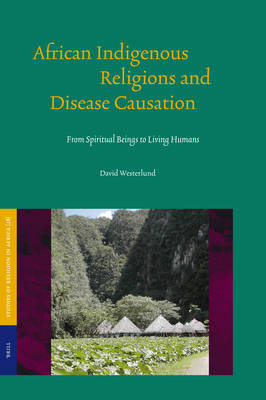
- Afhalen na 1 uur in een winkel met voorraad
- Gratis thuislevering in België vanaf € 30
- Ruim aanbod met 7 miljoen producten
- Afhalen na 1 uur in een winkel met voorraad
- Gratis thuislevering in België vanaf € 30
- Ruim aanbod met 7 miljoen producten
Zoeken
African Indigenous Religions and Disease Causation
From Spiritual Beings to Living Humans
David Westerlund
€ 195,45
+ 390 punten
Omschrijving
This comparative and historical study focuses on religious aspects of disease etiologies among five, systematically selected, African peoples: the San, Maasai, Sukuma, Kongo and Yoruba. Unlike the homogenizing tendencies of many earlier comparative works by scholars of religion, this book highlights the differences between and the plurality within the religions and cultures of the selected peoples, as well as processes of change. The work covers a period of about 100 years, from the late 19th to the late 20th century, and much of the material used comes from European mission archives. To different degrees among the peoples studied, there has been a gradual shift from an emphasis on spiritual beings such as God and ancestors to living humans like 'witches' as agents of disease. In a theoretically eclective analysis, possible reasons for this shift are discussed.
Specificaties
Betrokkenen
- Auteur(s):
- Uitgeverij:
Inhoud
- Aantal bladzijden:
- 237
- Taal:
- Engels
- Reeks:
- Reeksnummer:
- nr. 28
Eigenschappen
- Productcode (EAN):
- 9789004144330
- Verschijningsdatum:
- 3/08/2006
- Uitvoering:
- Paperback
- Formaat:
- Trade paperback (VS)
- Afmetingen:
- 166 mm x 239 mm
- Gewicht:
- 458 g

Alleen bij Standaard Boekhandel
+ 390 punten op je klantenkaart van Standaard Boekhandel
Beoordelingen
We publiceren alleen reviews die voldoen aan de voorwaarden voor reviews. Bekijk onze voorwaarden voor reviews.








